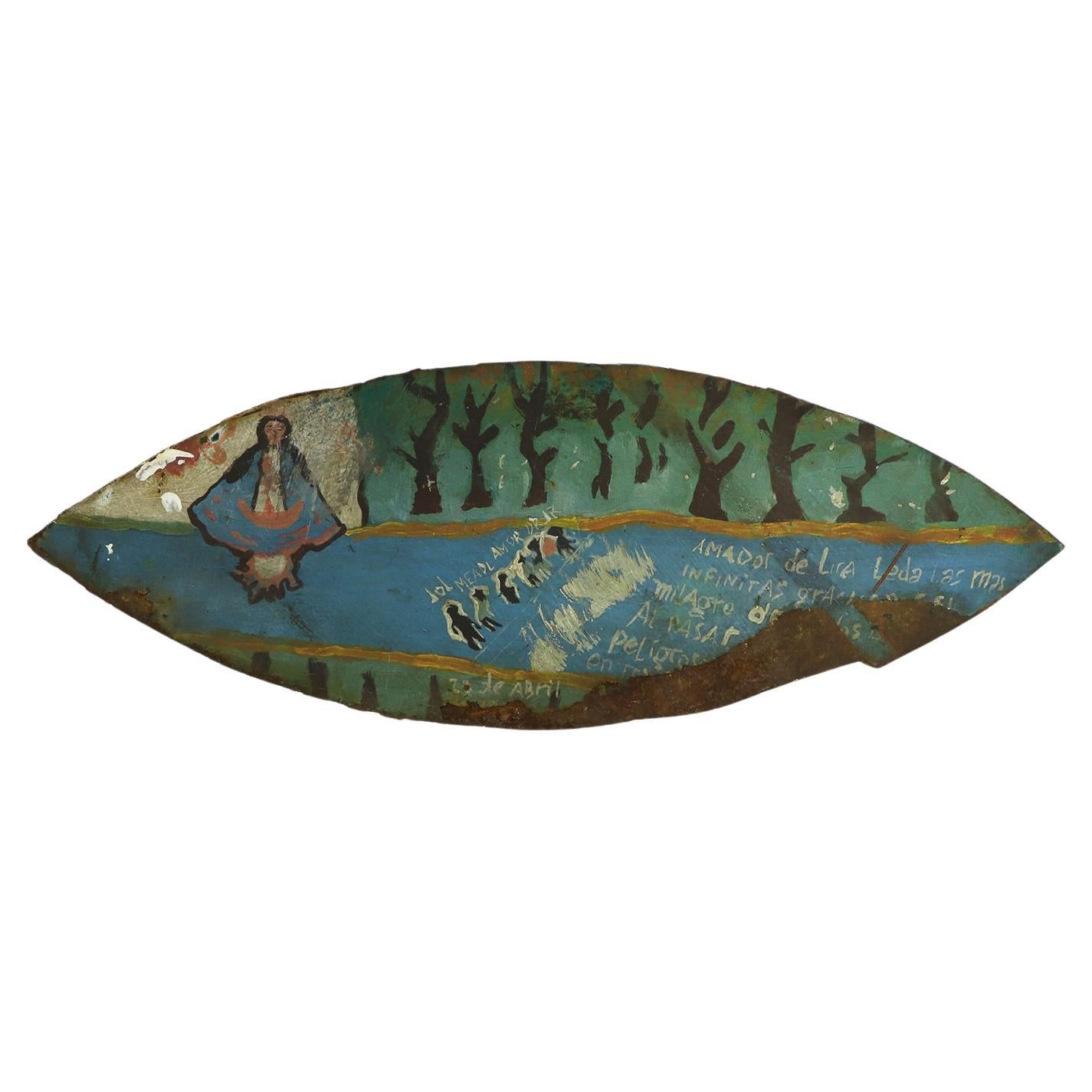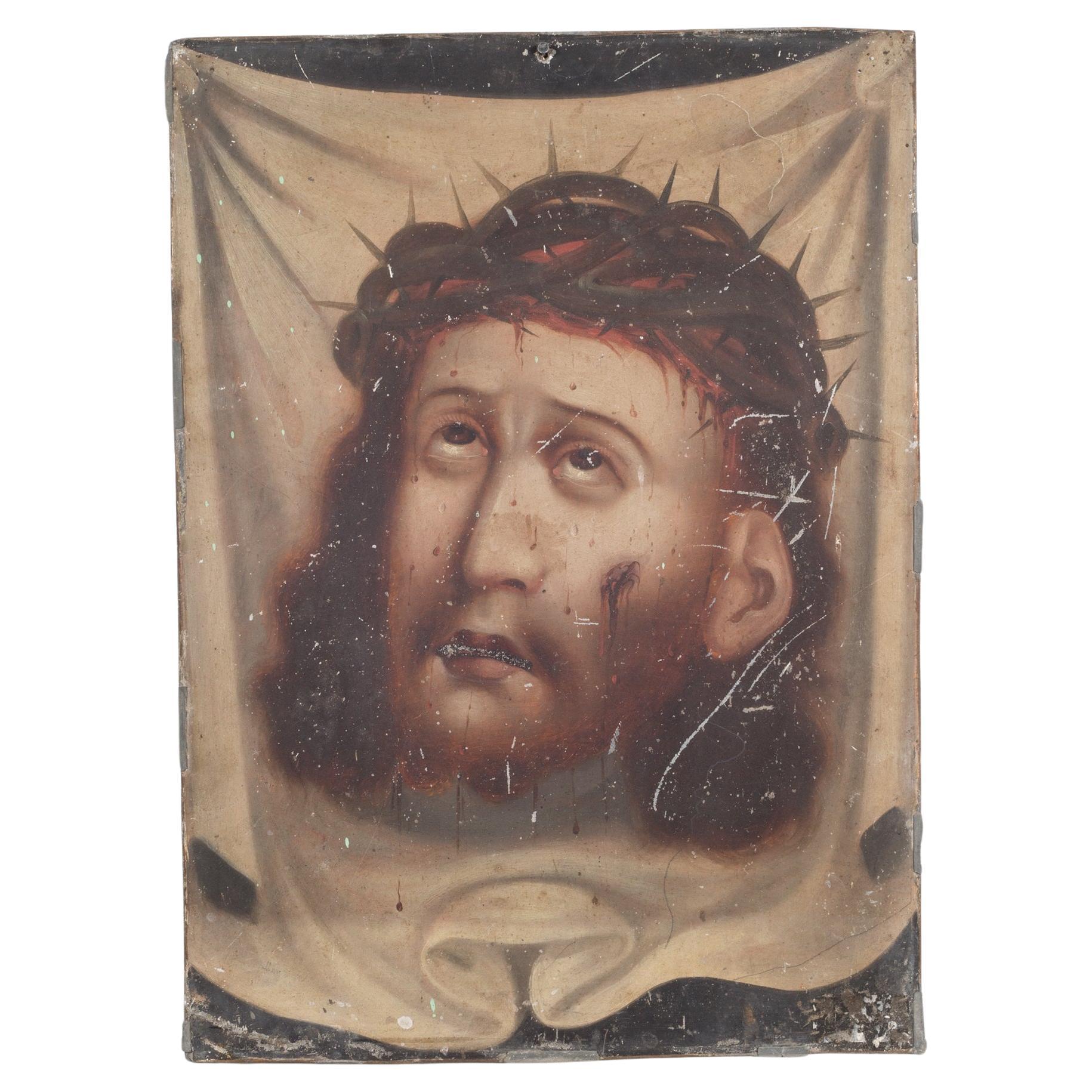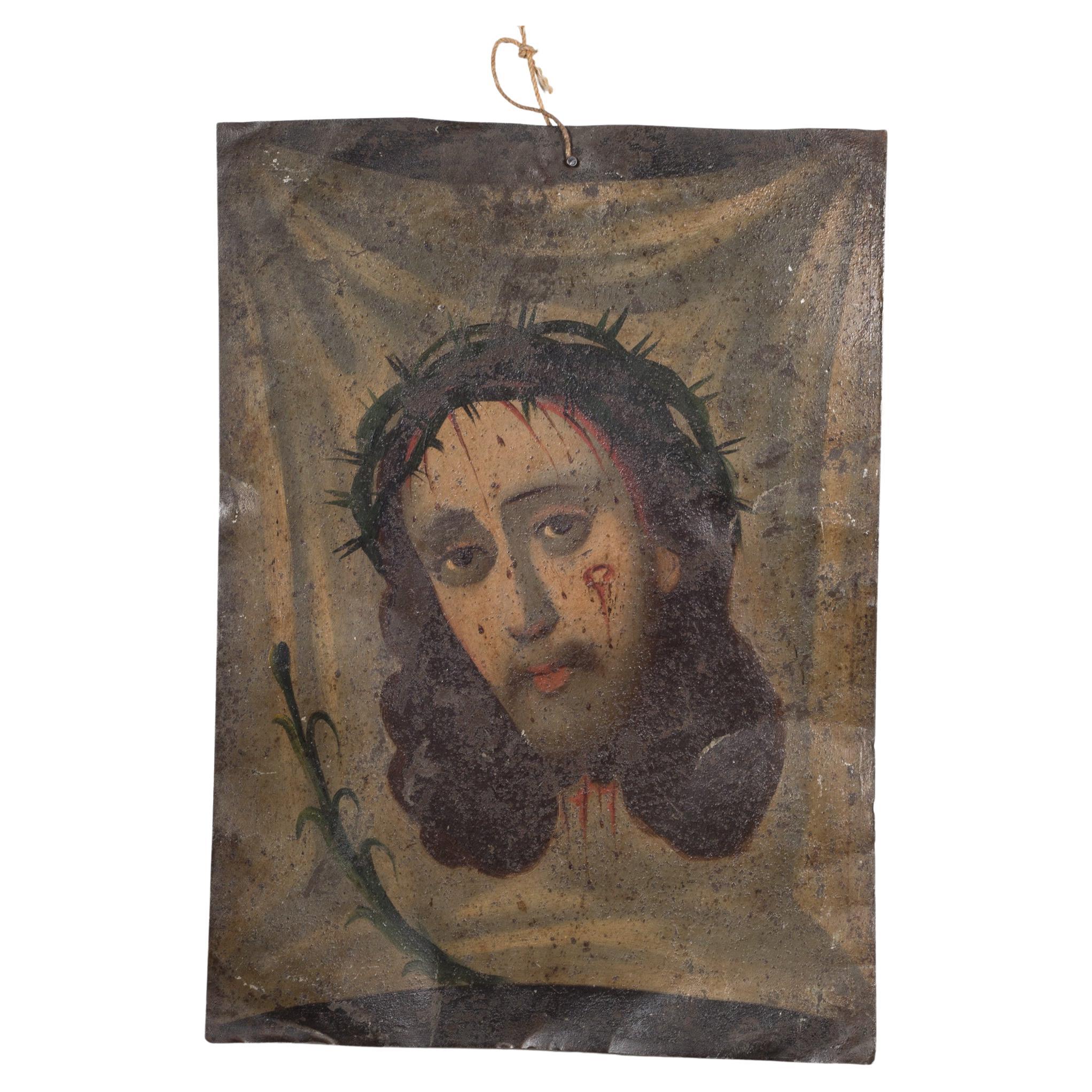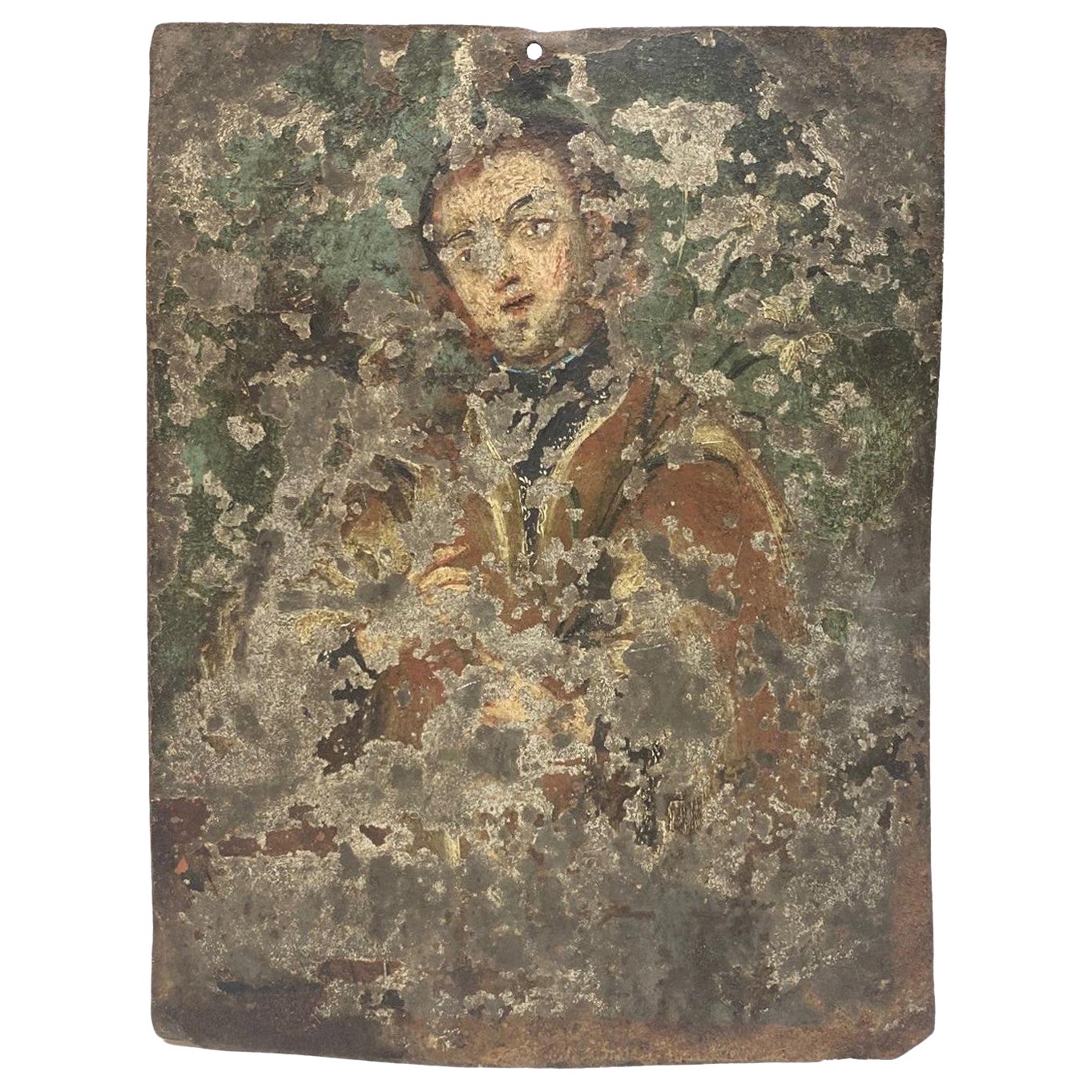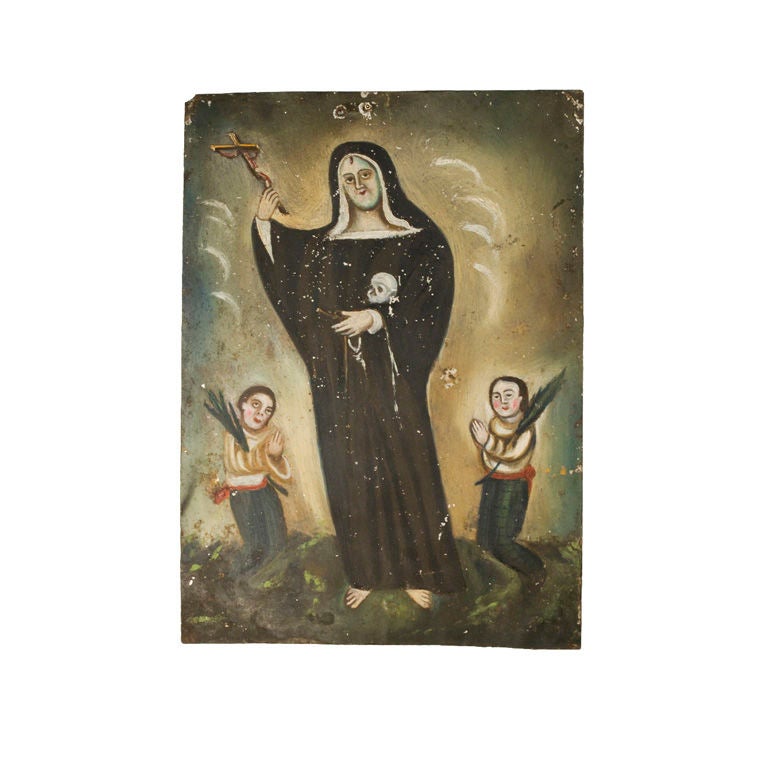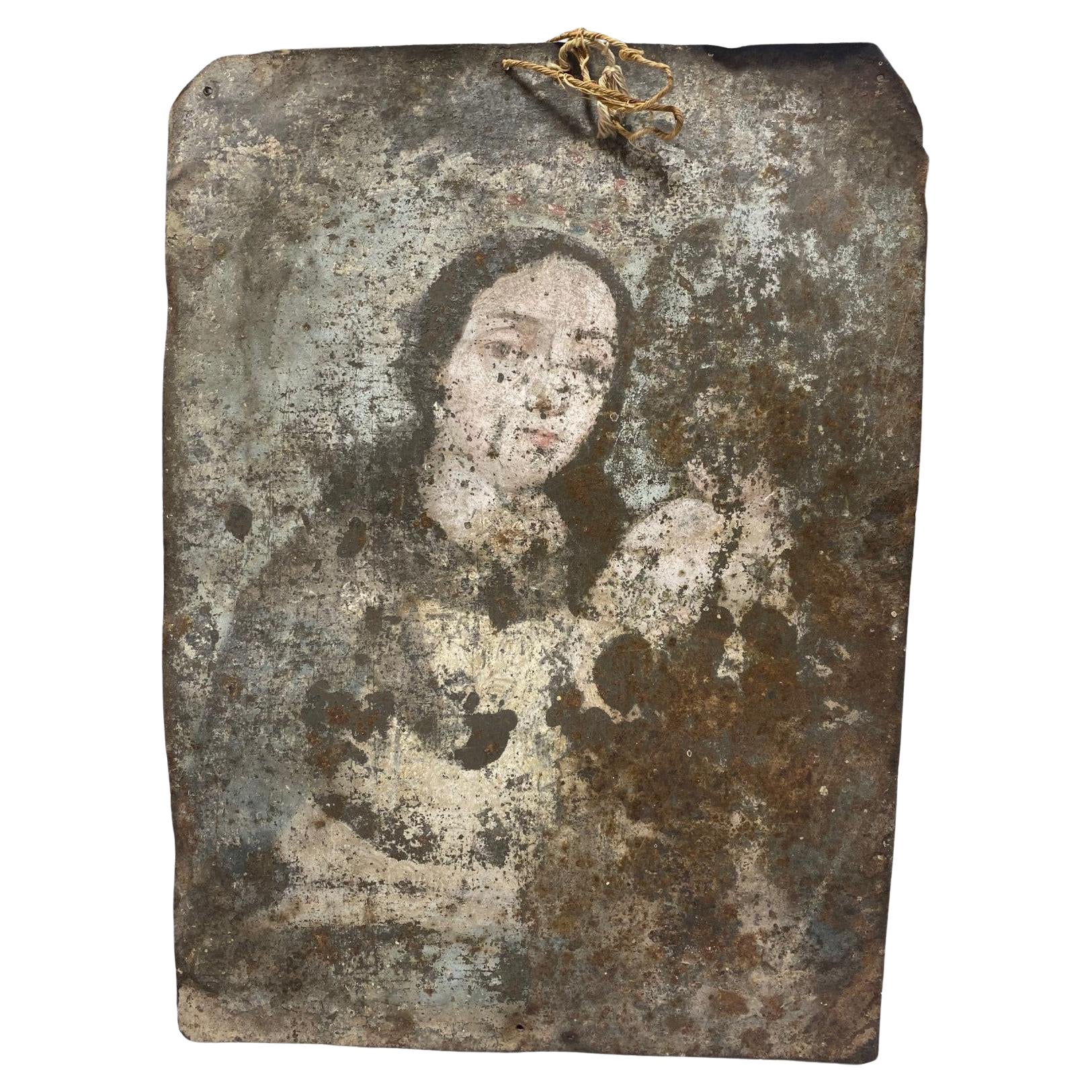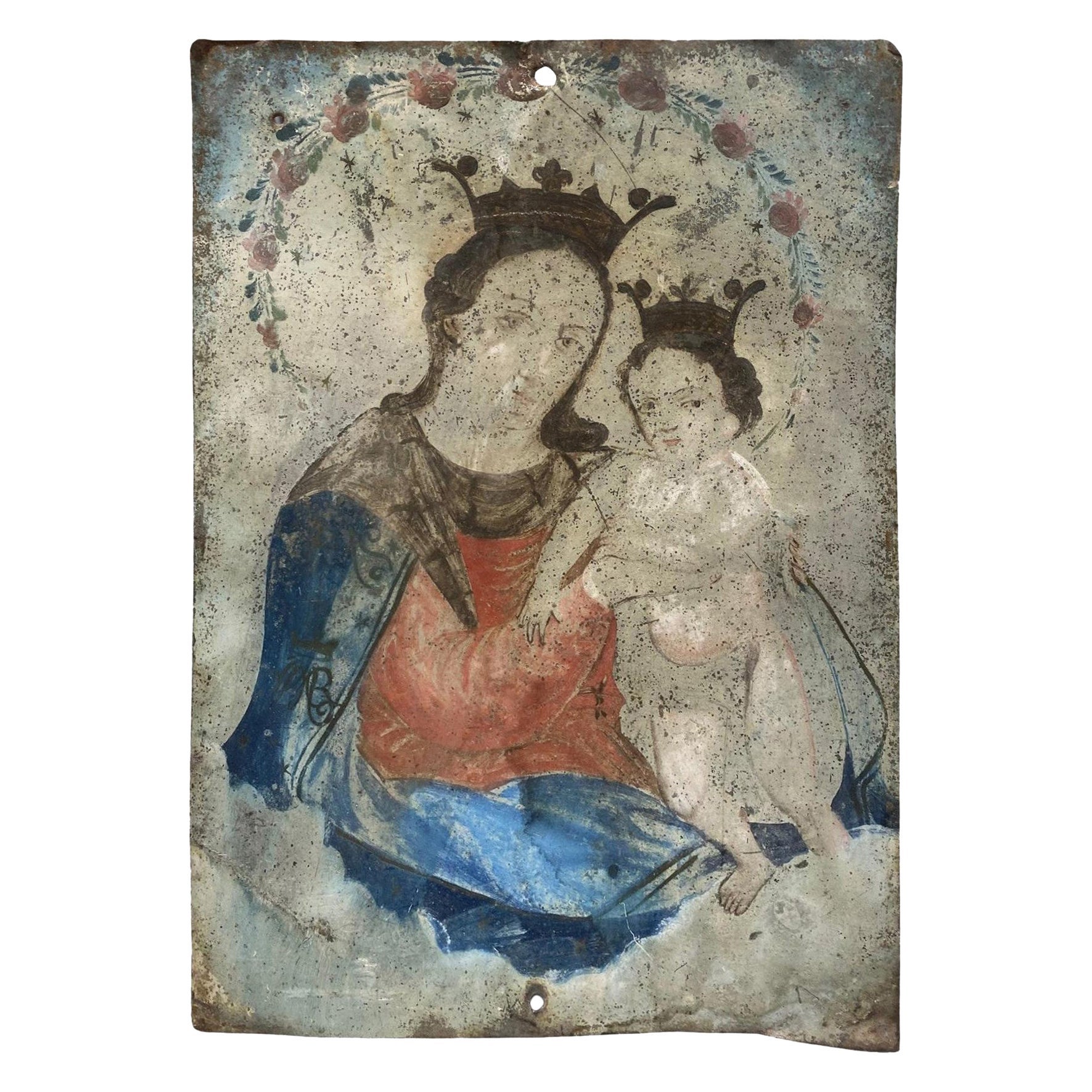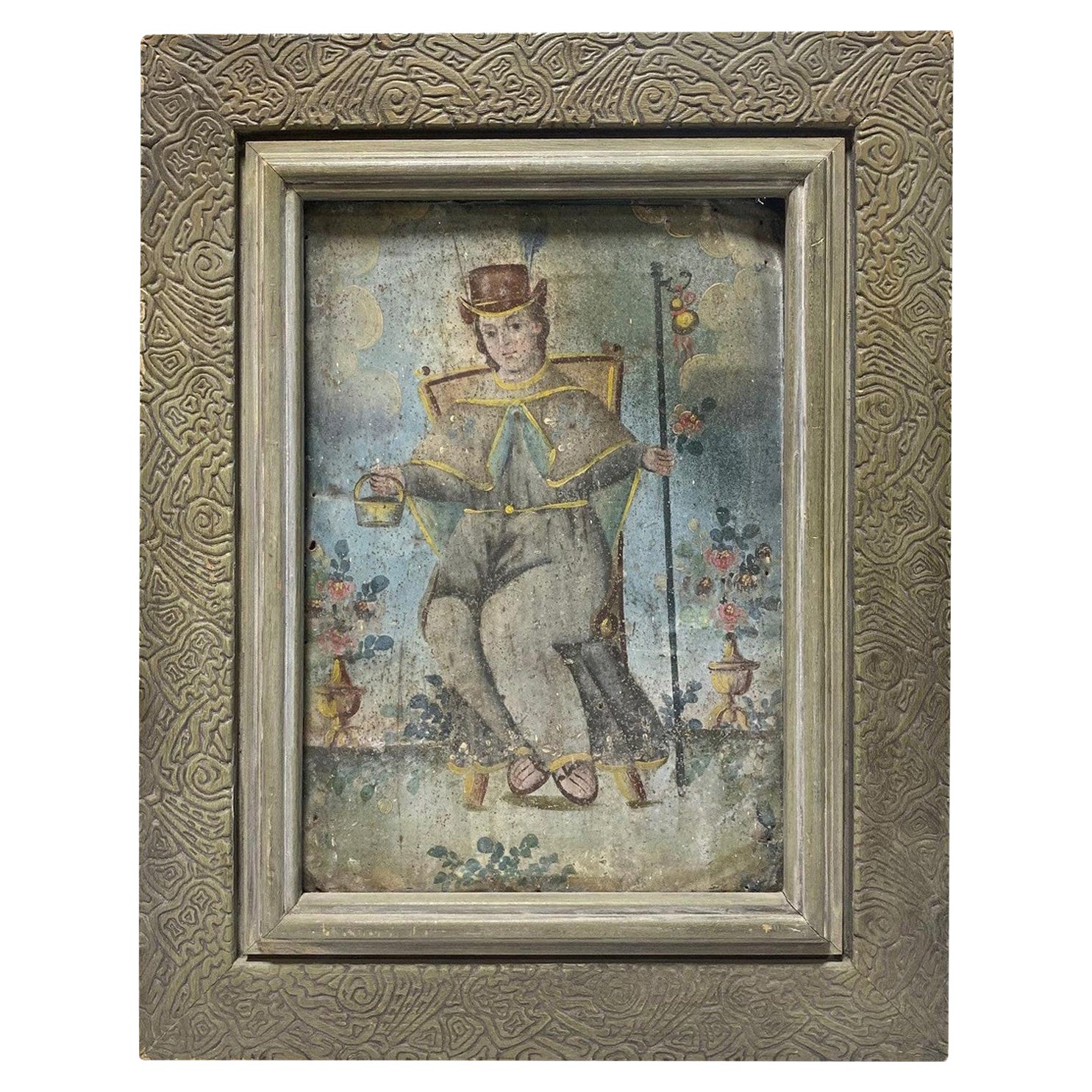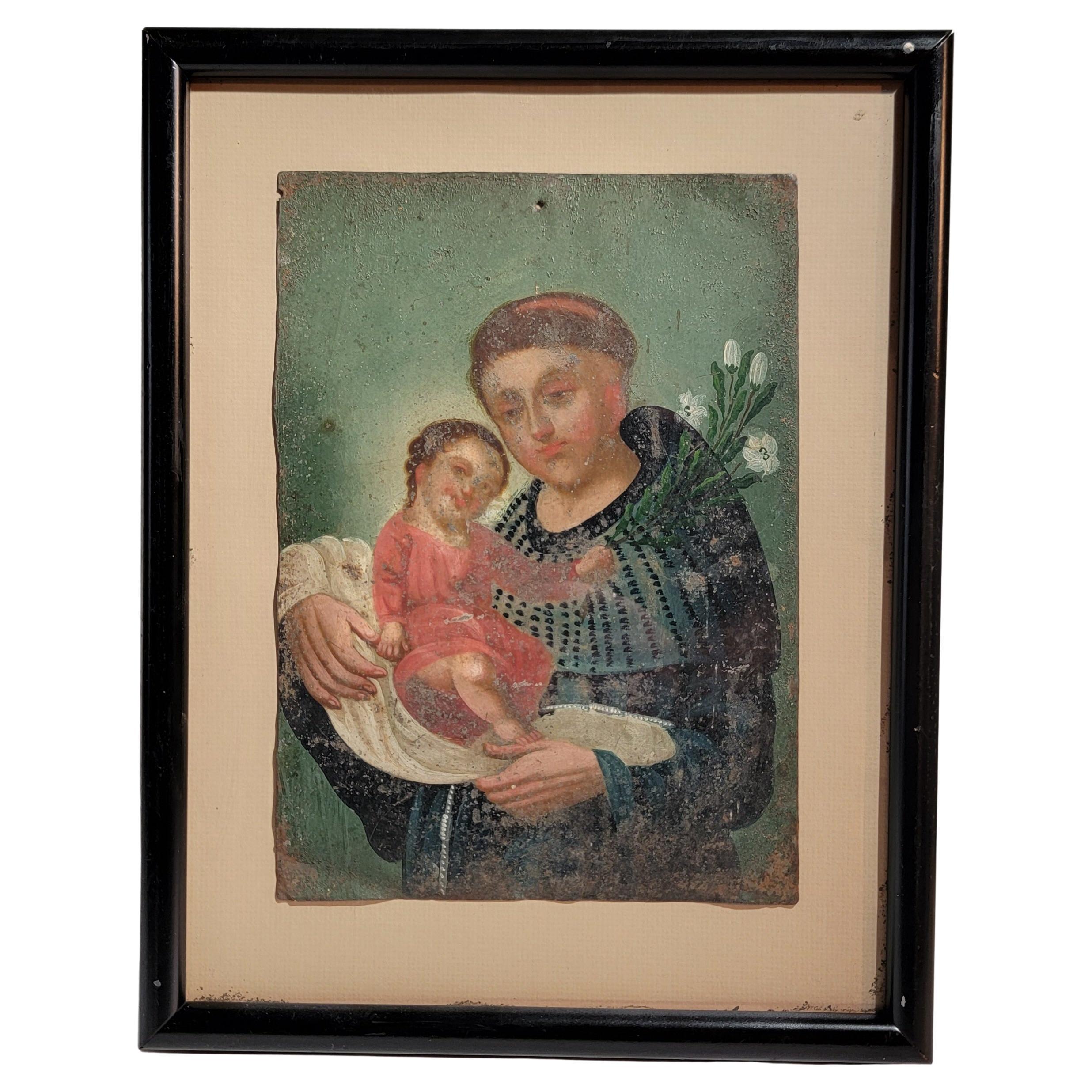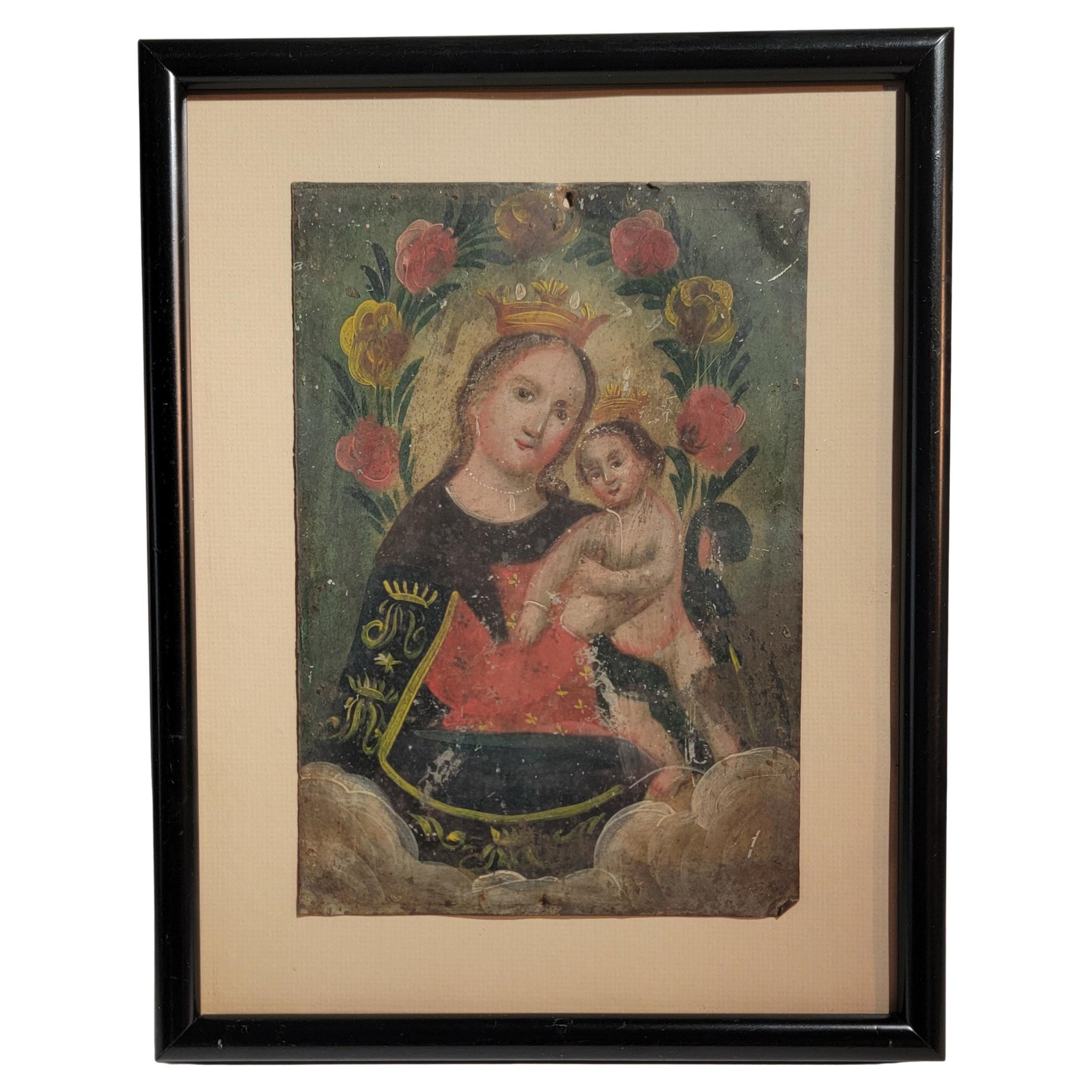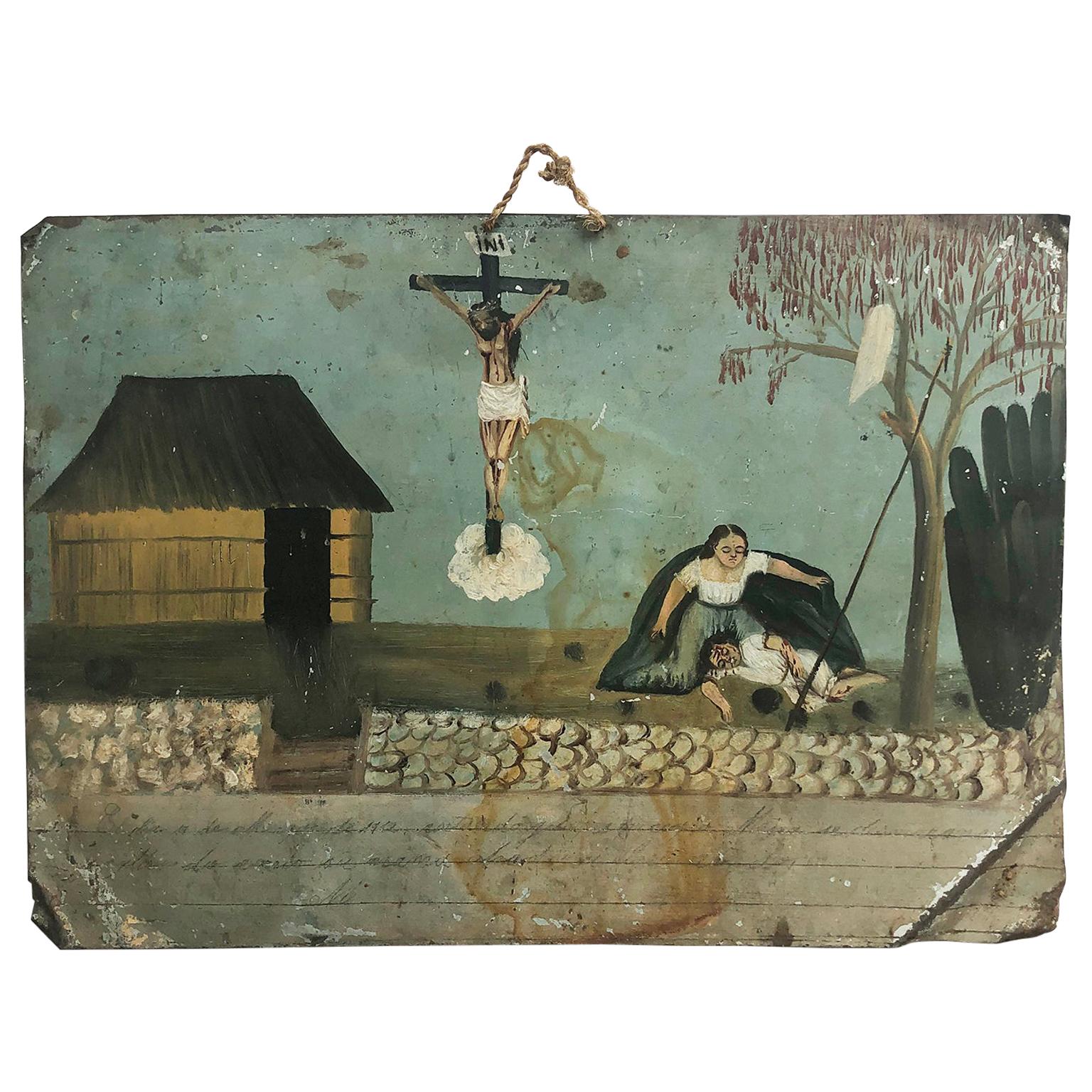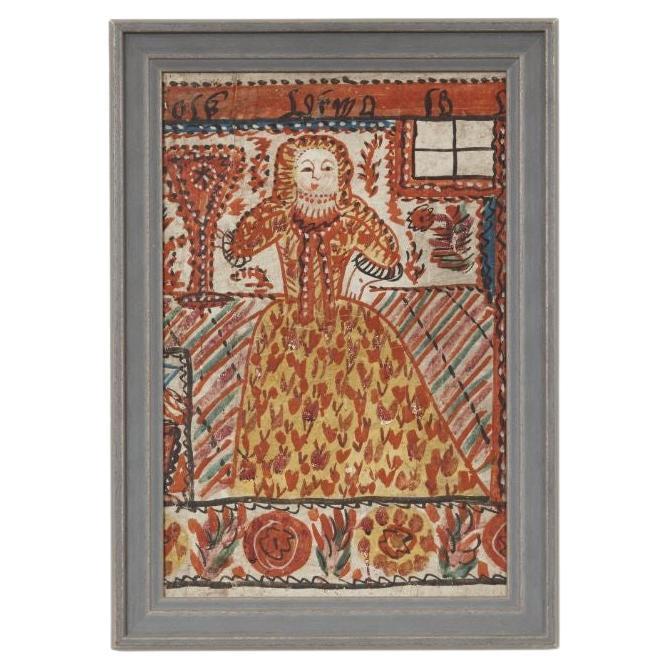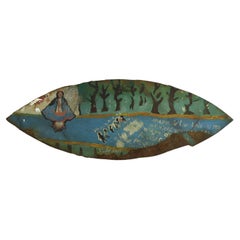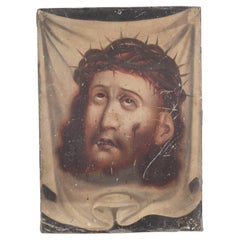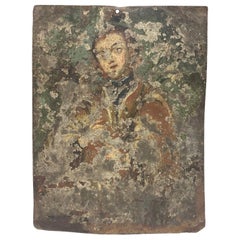
Mexican Tin Cut Out Retablo Angel
View Similar Items
1 of 4
Mexican Tin Cut Out Retablo Angel
About the Item
- Dimensions:Height: 25 in (63.5 cm)
- Place of Origin:
- Period:
- Date of Manufacture:Circa 1870
- Condition:paint loss.
- Seller Location:San Francisco, CA
- Reference Number:1stDibs: U0807158476128
Authenticity Guarantee
In the unlikely event there’s an issue with an item’s authenticity, contact us within 1 year for a full refund. DetailsMoney-Back Guarantee
If your item is not as described, is damaged in transit, or does not arrive, contact us within 7 days for a full refund. Details24-Hour Cancellation
You have a 24-hour grace period in which to reconsider your purchase, with no questions asked.Vetted Professional Sellers
Our world-class sellers must adhere to strict standards for service and quality, maintaining the integrity of our listings.Price-Match Guarantee
If you find that a seller listed the same item for a lower price elsewhere, we’ll match it.Trusted Global Delivery
Our best-in-class carrier network provides specialized shipping options worldwide, including custom delivery.You May Also Like
Original Mexican Retablo "Exvotos" Oil on Tin
Located in Mexico City, CDMX
Circa 1950.We offer this original exvoto.
Votive paintings in Mexico go by several names in Spanish such as “ex voto,” “retablo” or “lámina,” which refer to their purpose, place oft...
Category
Vintage 1950s Mexican Folk Art Paintings
Materials
Tin
19th C. Mexican Retablo "Veronica's Veil", c.1880
Located in San Francisco, CA
About
An original 19th century Mexican folk retablo "Veronica's Veil" or "El Divono Rostro" in Spain . Oil paint on tin.
The Veil of Veronica, known in Italian as the Volto Santo or Holy Face, is a Roman Catholic Relic which, according to legend, bears the likeness of the Face of Jesus that was imprinted on it prior to Jesus' crucifixion. According to Roman Catholicism, Saint Veronica encountered Jesus in Jeruselum on the way to Calvary. When she paused to wipe the sweat (Latin, suda) off his face with her veil, his image was left on the veil.
In the small village of Osa de la Vega in Spain, there lived a couple who led a very pious life. They were Gregorio de la Torre and Isabel Corral. From their father, Juan Montilla, they inherited a picture of the Face of Jesus or the Divino Rostro. A story that is told one day, to the amazement of many who confirmed its veracity, the picture began to perspire with living blood. News of this extraordinary event spread swiftly and widely throughout the land.
CREATOR Unknown.
DATE OF MANUFACTURE c.1880.
MATERIALS AND TECHNIQUES Oil Paint on Tin.
CONDITION Good. Wear consistent with age and use.
DIMENSIONS H 14 in. W 10 in.
HISTORY
Retablos, better known as 'laminas' in Mexico, are small oil paintings on tin, wood and sometimes copper which were used in home altars to venerate the almost infinite number of Catholic saints. The literal translation for 'retablo' is 'behind the altar.' This unique genre of art, deeply rooted in European history, was brought to Mexico with the arrival of the Spanish and then ultimately adopted by New World mestizo natives to become what is known today as the Mexican folk retablo.
The retablo was an art form that flourished in post conquest Mexico and then ultimately, with the introduction of inexpensive mediums such as tin, reached its pinnacle of popularity in the last quarter of the 19th century. With some exceptions, mostly untrained artists from the provinces worked to produce and reproduce these sacred images; some subjects painted more prolifically than others. A typical "retablero" may have reproduced the same image hundreds, if not thousands of times in his or her career.
These oil paintings were sold to devout believers who displayed them in home altars to honor their patron saints. There are virtually hundreds of saints, each invoked to remedy a different situation. "San Ysidro Labrador," the patron saint of farmers, is venerated for good weather...
Category
Antique 19th Century Mexican Folk Art Paintings
Materials
Tin
19th c. Mexican Retablo "Veronica's Veil" c.1880
Located in San Francisco, CA
ABOUT
An original 19th century Mexican folk retablo "Veronica's Veil" or "El Divono Rostro" in Spain . Oil paint on tin.
The Veil of Veronica, known in Italian as the Volto Santo or Holy Face, is a Roman Catholic Relic which, according to legend, bears the likeness of the Face of Jesus that was imprinted on it prior to Jesus' crucifixion. According to Roman Catholicism, Saint Veronica encountered Jesus in Jeruselum on the way to Calvary. When she paused to wipe the sweat (Latin, suda) off his face with her veil, his image was left on the veil.
In the small village of Osa de la Vega in Spain, there lived a couple who led a very pious life. They were Gregorio de la Torre and Isabel Corral. From their father, Juan Montilla, they inherited a picture of the Face of Jesus or the Divino Rostro. A story that is told one day, to the amazement of many who confirmed its veracity, the picture began to perspire with living blood. News of this extraordinary event spread swiftly and widely throughout the land.
CREATOR Unknown.
DATE OF MANUFACTURE c.1880.
MATERIALS AND TECHNIQUES Oil Paint on Tin.
CONDITION Good. Wear consistent with age and use.
DIMENSIONS H 14 in. W 10 in.
HISTORY
Retablos, better known as 'laminas' in Mexico, are small oil paintings on tin, wood and sometimes copper which were used in home altars to venerate the almost infinite number of Catholic saints. The literal translation for 'retablo' is 'behind the altar.' This unique genre of art, deeply rooted in European history, was brought to Mexico with the arrival of the Spanish and then ultimately adopted by New World mestizo natives to become what is known today as the Mexican folk retablo.
The retablo was an art form that flourished in post conquest Mexico and then ultimately, with the introduction of inexpensive mediums such as tin, reached its pinnacle of popularity in the last quarter of the 19th century. With some exceptions, mostly untrained artists from the provinces worked to produce and reproduce these sacred images; some subjects painted more prolifically than others. A typical "retablero" may have reproduced the same image hundreds, if not thousands of times in his or her career.
These oil paintings were sold to devout believers who displayed them in home altars to honor their patron saints. There are virtually hundreds of saints, each invoked to remedy a different situation. "San Ysidro Labrador," the patron saint of farmers, is venerated for good weather...
Category
Antique 19th Century Mexican Folk Art Paintings
Materials
Tin
Spanish Colonial Mexican Folk Art Ex-Voto Retablo Painting Catholic Saint 1800s
Located in Studio City, CA
A beautiful 19th-century Spanish Colonial Mexican Folk Art ex-voto retablo lámina painting featuring an unknown Spanish Roman Catholic Saint.
The work is hand-painted on metal (li...
Category
Antique 19th Century Mexican Folk Art Paintings
Materials
Metal, Tin
Santa Rita Retablo
Located in Santa Monica, CA
This late 19th century Mexican Folk Art devotional painting depicts St. Rita of Casia, the patron saint of lost and improbable causes.
Wishing to join an Augustinian convent ...
Category
Antique 19th Century Mexican Spanish Colonial Religious Items
Materials
Tin
$1,450
Colonial Mexican Folk Art Ex-Voto Retablo Painting of Mother Mary & Jesus, 1800s
Located in Studio City, CA
A beautiful 19th-century Spanish Colonial Mexican Folk Art ex-voto retablo lámina painting featuring Mother Mary with the infant Jesus Christ (faded and now almost a ghost-like figur...
Category
Antique 19th Century Mexican Folk Art Paintings
Materials
Metal, Tin
